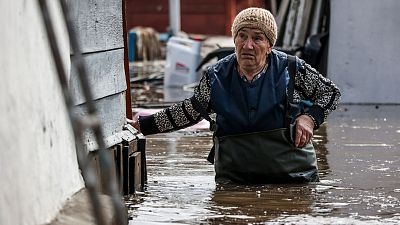The study also revealed the US cities that are suffering the most from climate change.
Human-caused global warming made July hotter for four out of five people on Earth, with more than 2 billion people feeling climate change-boosted warmth daily.
More than 6.5 billion people, or 81% of the world’s population, sweated through at least one day where climate change had a significant effect on the average daily temperature, according to a new report by Climate Central, a science non-profit. They have found a way to calculate how much climate change has affected daily weather.
“We really are experiencing climate change just about everywhere,” said Climate Central Vice President for Science Andrew Pershing.
How was the study conducted?
Researchers looked at 4,711 cities and found climate change fingerprints in 4,019 of them for July, which other scientists said is the hottest month on record.
The new study calculated that the burning of coal, oil and natural gas had made it three times more likely to be hotter on at least one day in those cities.
In the US, where the climate effect was largest in Florida, more than 244 million people felt greater heat due to climate change during July.
For 2 billion people, in a mostly tropical belt across the globe, climate change made it three times more likely to be hotter every single day of July. Those include the million-person cities of Mecca, Saudi Arabia and San Pedro Sula, Honduras.
What was the hottest day in July?
The day with the most widespread climate change effect was 10 July, when 3.5 billion people experienced extreme heat that had global warming's fingerprints. That's different than the hottest day globally, which was 7 July, according to the University of Maine's Climate Reanalyzer.
Is the study peer-reviewed?
The study is not peer-reviewed, the gold standard for science, because the month just ended. It is based on peer-reviewed climate fingerprinting methods that are used by other groups and are considered technically valid by the National Academy of Sciences.
Two outside climate scientists told The Associated Press that they found the study to be credible.
How do scientists know climate change is to blame?
More than a year ago Climate Central developed a measurement tool called the Climate Shift Index.
It calculates the effect, if any, of climate change on temperatures across the globe in real time, using European and US forecasts, observations and computer simulations.
To find if there is an effect, the scientists compare recorded temperatures to a simulated world with no warming from climate change and it’s about 2 degrees (1.2 degrees Celsius) cooler to find out the chances that the heat was natural.
“By now, we should all be used to individual heat waves being connected to global warming,” said Princeton University climate scientist Gabriel Vecchi, who wasn't part of the study. “Unfortunately, this month, as this study elegantly shows, has given the vast majority of people on this planet a taste of global warming’s impact on extreme heat."
Which US cities are suffering the most from climate change?
In the United States, 22 cities had at least 20 days when climate change tripled the likelihood of extra heat, including Miami, Houston, Phoenix, Tampa, Las Vegas and Austin.
The US city most affected by climate change in July was Cape Coral, Florida, which saw fossil fuels make hotter temperatures 4.6 times more likely for the month and had 29 out of 31 days where there was a significant climate change fingerprint.
The farther north in the United States, the less the climate effect was seen in July. Researchers found no significant effect in places like North Dakota and South Dakota, Wyoming, northern California, upstate New York and parts of Ohio, Michigan, Minnesota and Wisconsin.
Heat waves in the US Southwest, the Mediterranean and even China have gotten special analysis by World Weather Attribution finding a climate change signal, but places like the Caribbean and Middle East are having huge climate change signals and not getting the attention, Pershing said. Unlike the other study, this one looked at the entire globe.



